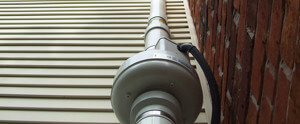World Health Organization (WHO) Sets Radon Action Level of 2.7 - Less Lung Cancer Risk Than EPA 4.0
PRLog (Press Release) - Sep 22, 2009 - Radon gas has been identified as the leading cause of lung cancer for non-smokers according to recent studies conducted throughout the world. The World Health Organization states that as many as 14% of the lung cancer cases in many countries (including the United States) are caused by exposure to radon gas. These recent findings have lead to the establishment of a new standard for action of 2.7 for indoor radon levels.
http://www.mitigationsystem.com/releases/release/7166404 ...
The World Health Organization has released their Handbook on Indoor Radon which strongly validates the worldwide threat of exposure to radon gas. According to handbook, WHO has been studying the effects of radon exposure since 1979. Although radon was classified as a human carcinogen in 1988, it took over 20-years of sound research and real-life studies from all over the world to confirm the true magnitude of the risk radon poses. Based on the results of these studies, WHO now suggests that homeowners take action when radon levels exceed 2.7 pCi/l. This is a much more conservative figure than the Environmental Protection Agency (EPA's) action level of 4.0 pCi/l, which has been the U.S. standard for over 20-years.
More than 100 scientists from 30 countries have participated in the World Health Organization International Radon Project since 2005 which has lead to the publishing of the WHO Handbook on Indoor Radon this year. The book is a useful resource for concerned homeowners or anyone who wants to learn more about the toxic carcinogen known as radon. It outlines the years of research and the very conclusive findings that have triggered a push for stricter legislation and construction practices that will reduce the risk of indoor radon exposure to the general population. You can download a copy of the WHO Radon Handbook here: http://whqlibdoc.who.int/publications/2009/9789241547673 ...
The United Nations also broke new ground in the international fight on radon-induced lung cancer earlier this year when they released their acknowledgement of the radon problems throughout the world. They analyzed both residential studies as well as extrapolated data from underground miner studies to confirm the previously understated radon risk. Their findings are documented in The U.N. Assessment for Radon in Homes and Workplaces: http://www.unscear.org/docs/reports/2006/09-81160_Report ...
"By encouraging people to take action when radon levels exceed 2.7 rather than the previous limit of 4.0, we should see a dramatic increase in the number of homes being tested and mitigated as well as improved enforcement of radon resistant new construction requirements," according to Jamey Gelina, a radon mitigation specialist with Air Quality Control Agency. His firm is one of the largest companies in the U.S. that specializes in installing radon removal equipment. http://www.MitigationSystem.com
Most major health organizations (including The American Medical Association, National Cancer Institute, and American Lung Association) for years have known that radon increases lung cancer risk. However, recent studies have confirmed that the risk is evident even at levels much lower than earlier studies suggested. The good news is this: Radon testing is easy and inexpensive. Homes with elevated radon levels (even at 2.7) can be fixed using current radon remediation technology. Learn more at http://www.RadonMitigation.us




